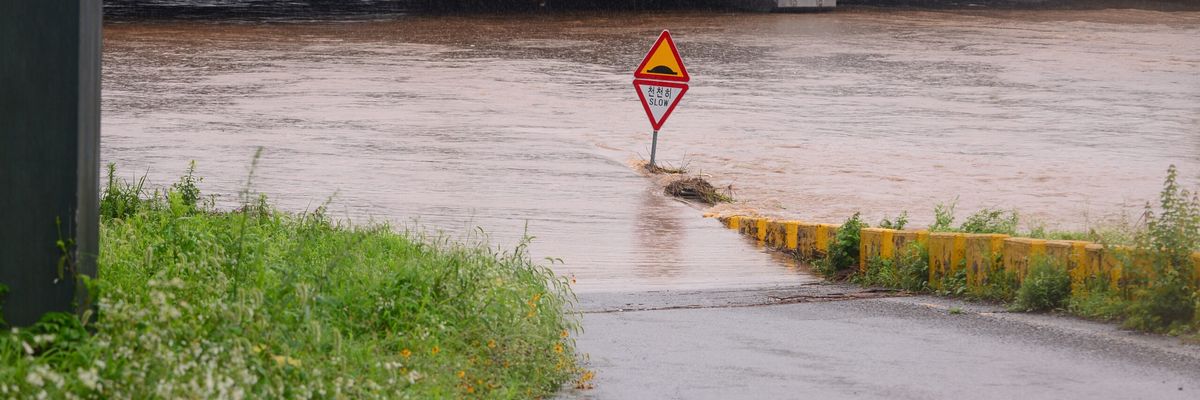The new UN report on the climate crisis is truly frightening. The report tells us what we already know about the reasons for the current heat waves, flooding, forest fires, ice melt, and extreme weather events sweeping the planet. We humans are causing these changes, primarily by burning fossil fuels in our cars, planes, and factories.
The report also tells us what we perhaps don’t know: that even if countries uphold their current pledges to reduce carbon emissions, it will only result in a one percent decrease in global emissions by 2030 (from 2010 levels). To make sure that the planet doesn’t go past the point of no return, climate-wise, those global emissions must be cut by 50 percent before the end of this decade.
As UN chief António Guterres says, the new UN report is a “code red for humanity.”
The climate crisis affects regions of the world differently. Huge forest fires are blazing in Siberia, Greece, and California. Ice loss in Greenland and Antarctica is contributing to a significant rise in sea levels that is encroaching on coastlines and threatening to sink a number of islands around the world. Germany recently experienced unprecedented rainfall that led to the inundation of several towns in the Rhine basin.
In Asia, the primary impact of climate change is on the monsoon cycle. Essentially, areas that traditionally get a lot of rain will get even more while dry regions will become even drier.
Just this month, record rainfall in central China produced flooding and mudslides that killed more than 300 people.
Korea has experienced the same catastrophes. Last summer, heavy rainfall swept through the middle of South Korea, flooding the city of Daejeon and even overflowing the banks of the Han in Seoul. It was the longest monsoon in seven years: 42 straight days of rain.
North Korea, too, went through heavy rains last summer. And now it is facing flooding once again. In the country’s northeast, heavy rains have destroyed houses and farmland. At least 5,000 people have been evacuated from the flood zones.
For South Korea, climate change will largely be felt through extreme weather events, primarily flooding in certain areas and droughts in others. Tidal flats will disappear. Agriculture will be affected by rising temperatures and the influx of new insects. But with less than 5 percent of the population working in the agricultural sector and the country importing a lot of its food, the consequences will not be acute. South Korean agriculture can adapt.
In North Korea, however, climate change will have a devastating effect on the population’s food security. The government has admitted that the country is now facing its “worst-ever” situation, which has been compounded by COVID-19 and the dramatic reduction of trade coming from neighboring China.
According to a recent report on security and climate risk in North Korea, “Climate projections indicate that areas of the South Hamgyong and North Pyŏngan provinces, which cultivate a combined 38% of the country’s rice and 30% of its soybeans, will experience up to an additional 3 months of severe drought each year by 2035.” In other areas, severe flooding will disrupt food production.
If this sounds familiar, it’s exactly the same combination of drought and flooding that triggered North Korea’s food crisis in the early 1990s, which led to the country’s “Arduous March” of famine and institutional breakdown. The North Korean political and economic system is no better prepared today to deal with these systemic stresses than it was in the 1990s.
The two Koreas cannot by themselves stop the climate crisis. Right now, because of its rather low industrial and agricultural production, North Korea has a very small carbon footprint, comparable to that of Trinidad and Tobago. Since 1990, it has actually cut its carbon emissions by over 70 percent, though again this has not been a conscious choice but rather the byproduct of a steep economic decline.
South Korea, by contrast, is one of the top ten emitters of carbon in the world. It has taken steps to reduce its own emissions, promising to be carbon neutral by 2050. But even if Seoul abides by that pledge, it won’t by itself arrest climate change.
But here’s what the two Koreas can do. They can unite in the fight against global warming. They can compose a peninsular plan to transition together to a clean energy future. The two Koreas can put aside all the differences that divide them – the military confrontation, the vast economic gap, the enormous divergence in political systems – and focus instead on the common threat of climate change.
In this one category, North Korea actually has a certain advantage in that its carbon output right now is relatively low. Given a relatively modest amount of capital, North Korea can leapfrog more easily to a carbon-neutral economy.
South Korea is the one that needs to catch up by drastically reducing its carbon emissions. And it will cost a great deal more for its advanced economy to pivot. But South Korea also has the capital to help both halves of the peninsula make this transition.
In this way, the two Koreas won’t by themselves transform the global economy. But by setting aside their myriad differences, North and South Korea can show the rest of the world that addressing the climate emergency must take precedence over all other disagreements. And if the two Koreas can effectively ignore the DMZ that divides the peninsula, it can show the way for the rest of the world to bridge the equally deep gap that separates the global North form the global South.
Cooperating on reopening the Kaesong Industrial Complex? Putting together a joint team for the Olympics?
These are worthy inter-Korean projects. But they just doesn’t compare to the cooperation that’s needed, immediately, to address the climate emergency that’s adversely affecting the Korean peninsula and the world at large.
This article has been republished with permission from Foreign Policy in Focus.
















